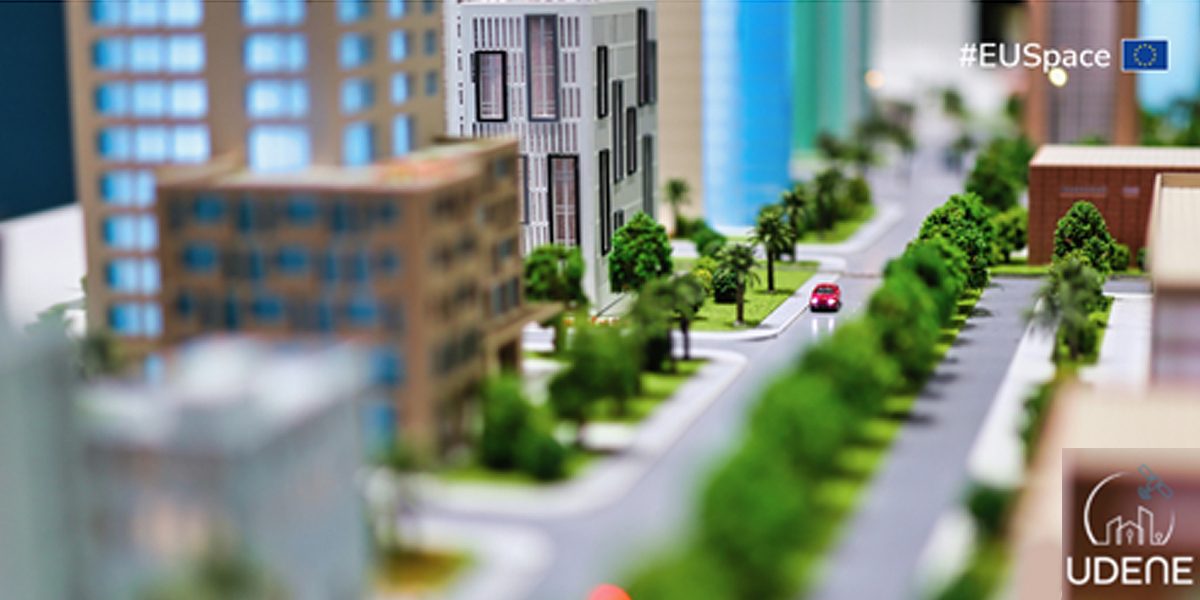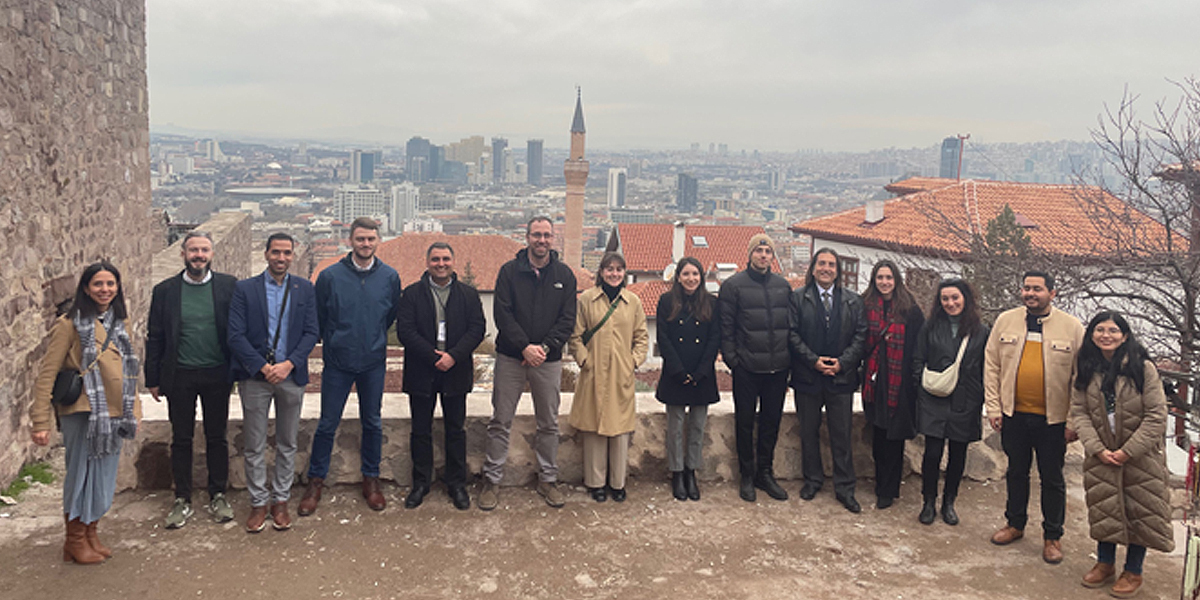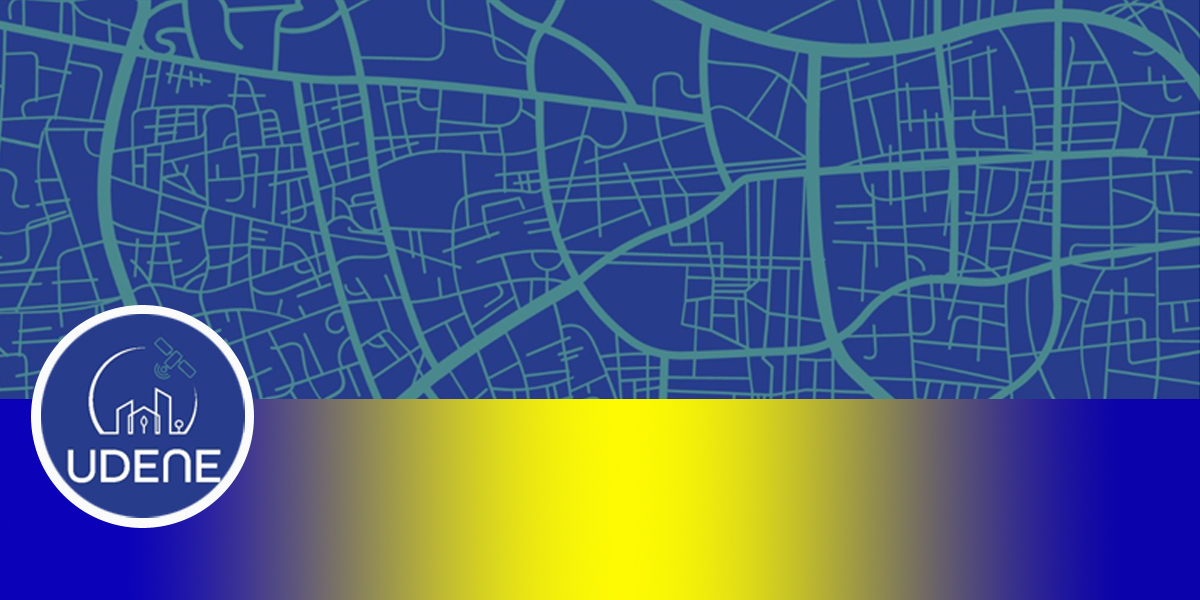The world is becoming increasingly urban, driven by climate change, inequalities and conflict. The problem is that the bulk of this urban development, especially in emerging countries, happens without any real planning. As a result, liveability in cities tends to trend downwards. But Earth Observation (EO) data could offer a solution.

According to the EUSPA-supported and Horizon Europe-funded UDENE project, the EO data coming from Copernicus satellites and local sources has the potential to enable evidence-based decision making for urban development.
With the aim of supporting the UN Sustainable Development Goal 11 of making cities safe, resilient and sustainable, the UDENE project is developing a platform that will provide scenario-based projections using Copernicus data complemented by remote sensing and local in-situ data.
“The wealth of EO data in fast and accessible data cube format provides a great search space for exploring natural experiments and exploiting the value-add of causal analysis,” says Ali Türker, Digital Transformation Leader at WEglobal and UDENE project coordinator.

An EO-based approach to urban development
The UDENE project brings together partners from France, Italy, Serbia, Slovenia, Tunisia and Turkey. Together, this international team (pictured above) will conduct such activities as data acquisition and partnership building – all of which will be facilitated by open Financial Support for Third Parties calls.
All the project’s outcomes will be integrated into a virtual laboratory platform, which will match users to existing EO products, processes and services. “We want to provide a place where urban visionaries, planners and developers from our partner countries can use Copernicus derived data to test the specific impact of their ideas via natural experiments that occurred in another place and/or at another time,” explains Türker.
The virtual lab will be validated via three use cases. In Istanbul, Turkey, a use case will focus on the impact high-rise building districts have on earthquake preparedness and/or damage and loss assessment. In Tunis, Tunisia, the project looks to classify local climate zones and involve citizens in the data collection process as part of a use case evaluating how green spaces can help reduce urban heat islands.
Read more: Using Copernicus data to climate-proof cities
The third use case, set to take place in Novi Sad, Serbia, will leverage local traffic metrics to analyse the effects the construction of a ring road would have on congestion and air quality.
“We are confident that our evidence-based approach to urban development – an approach that is powered by a vast amount of EO data – will complement existing Earth Observation products and services,” concludes Türker. “In doing so, UDENE will also expand European excellence in the use of EO technology for urban development applications that have both a high economic and societal impact.”

Earth Observation: A powerful tool for effective urban planning
Earth Observation is a particularly powerful tool for urban planning. According to the latest edition of EUSPA’s EO and GNSS Market Report (pictured above) EO provides valuable information for monitoring informal dwellings and informing the progress and state of urban greening.
Moreover, EO-based services provide essential information on air quality in urban environments, measuring particles that might affect the heath of citizens and monitoring greenhouse gas emissions. EO data also facilitates the assessment of an urban area’s vulnerability to a range of natural hazards and aids in the creation of resilient urban spaces that can withstand, or even minimise, the impact of natural disasters.
EO data further serves as a valuable source for detecting signs of urban decline, mapping the extent of destruction, and providing essential geospatial information for effective urban planning and development. When combined with GNSS data, it offers a comprehensive understanding of the urban landscape, empowering urban planners and stakeholders to make informed decisions and drive sustainable recovery and development.

The UDENE Mission
Objective 1: Structure local in-situ data on urban environments as data cubes and link them to existing Copernicus data cube federations to enable the fast exploration of impact evidence about potential urban development ideas across time and locations in EO data.
Objective 2: Jointly develop new and advanced sensitivity analysis algorithms to verify and operationalise multivariate causal effect models of the impact that an urban development option may have on economic outcomes that are relevant for cities (e.g., efficient water use, air pollution, heat load, energy consumption, earthquakes, mobility measures).
Objective 3: Build partnerships between the European space industry, SMEs, universities, research institutes, and GEO initiatives and non-EU (public/private) entities, with the shared goal of valorising existing EO-related technologies and promoting further investments. Leverage the urban development decision support system for this purpose.
Story source: European Union Agency for the Space Programme (EUSPA)
Subscribe to our newsletter
Stay updated on the latest technology, innovation product arrivals and exciting offers to your inbox.
Newsletter

